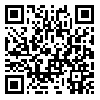Volume 3, Issue 9 (12-2014)
2014, 3(9): 29-41 |
Back to browse issues page
Download citation:
BibTeX | RIS | EndNote | Medlars | ProCite | Reference Manager | RefWorks
Send citation to:



BibTeX | RIS | EndNote | Medlars | ProCite | Reference Manager | RefWorks
Send citation to:
Darvish A, Ghorban M, Fakheran S, Soffianian A. Network Analysis and Key Actors Toward Wildlife Management (Case Study: Habitat of Caucasian Black Grouse, Arasbaran Biosphere Reserve). Iranian Journal of Applied Ecology 2014; 3 (9) :29-41
URL: http://ijae.iut.ac.ir/article-1-564-en.html
URL: http://ijae.iut.ac.ir/article-1-564-en.html
Abstract: (10782 Views)
One of the most important approaches for policy making in order to biodiversity conservation and wildlife management is co-management of natural resources. Local stakeholders are one of the main elements in this approach. This is necessary to consider social network analysis in the framework of social-ecological systems toward biodiversity conservation and sustainable wildlife management. In this study, social network analysis and understanding key actors or social powers for implementation of co-management toward biodiversity and sustainable habitat management of Caucasian Black Grouse in Kharil village of Arasbaran area had discussed. The results illustrated key actors, social powers in environmental decisions. Also, according to in-degree and out-degree centrality, actors who have social power and dominance have revealed. Yo-Al actor has highest social power and Vahe-Eb actor has highest social dominance and also Ka-Gh actor has highest betweenens role in the study society. These actors will be outlined as local leaders in the process of ecosystem co-management in the study area. The outcomes of this research could be used for conducting co-management and biodiversity management action plan.
Keywords: Social power, Co-management, Network analysis, Social capital, Social-ecological systems, Black Grouse, Kharil.
Type of Study: Applicable |
Subject:
General
| Rights and permissions | |
 | This work is licensed under a Creative Commons Attribution-NonCommercial 4.0 International License. |






